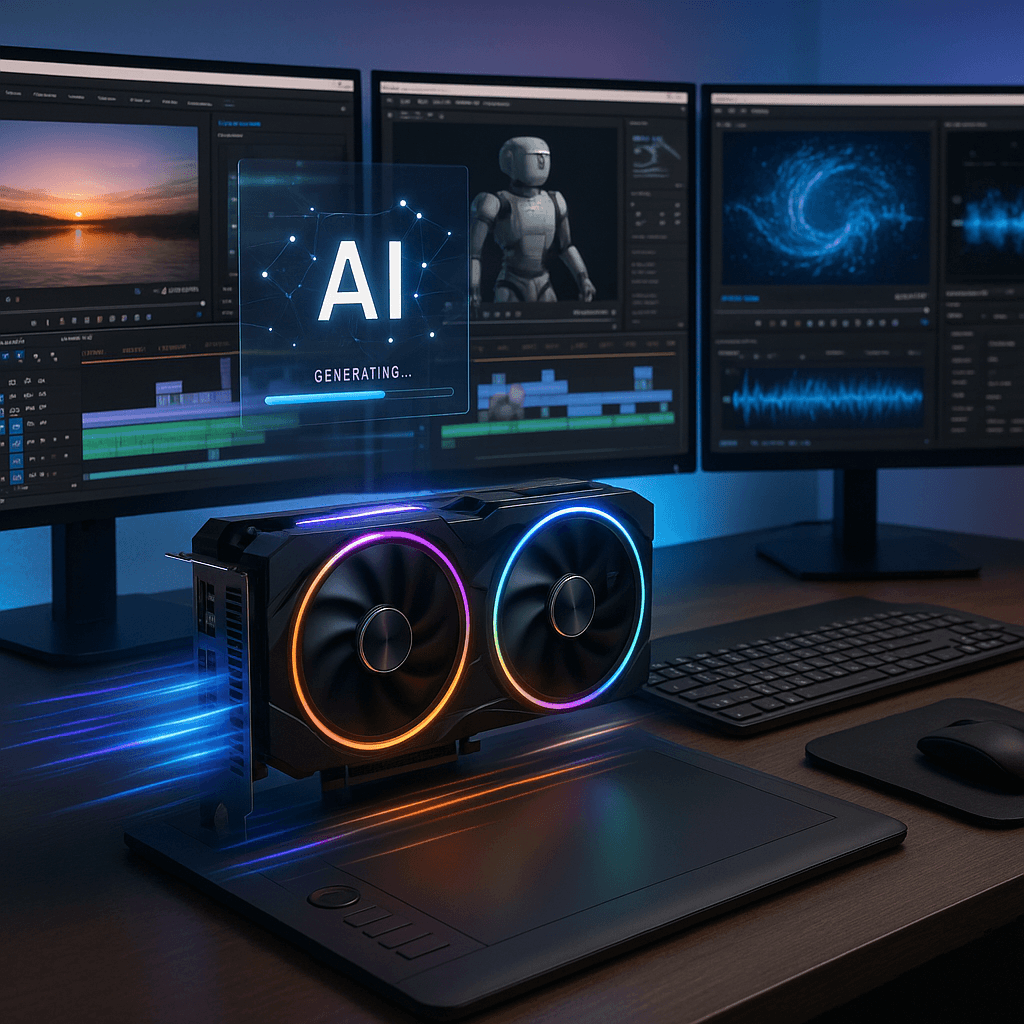NVIDIA is making a play for creative professionals with its new RTX 50 Series GPUs, showcasing AI-powered video editing and 3D rendering capabilities at Adobe MAX last week. The company demonstrated how its latest hardware accelerates creative workflows up to 17x faster than Apple's M4 Max, positioning RTX as the go-to platform for demanding AI-driven content creation.
NVIDIA just threw down the gauntlet in the creative computing space. At last week's Adobe MAX creativity conference, the chip giant unveiled how its new GeForce RTX 50 Series GPUs are engineered specifically to handle the AI-heavy workflows that modern creators demand.
The timing isn't coincidental. As content creators increasingly rely on AI-powered tools for everything from background removal to automated video effects, the hardware requirements have skyrocketed. NVIDIA's answer comes in the form of fifth-generation Tensor Cores designed for demanding AI tasks, paired with fourth-generation RT Cores for 3D rendering.
But the real story emerged in the performance benchmarks. Popular AI models like Stable Diffusion 3.5 and FLUX.1 run up to 17 times faster on the RTX 5090 Laptop GPU compared to Apple's M4 Max - a direct shot at the MacBook Pro's creative computing dominance. In video editing applications like DaVinci Resolve, RTX-equipped laptops deliver AI effects up to 2x faster than MacBook Pro systems.
The demonstration at Adobe MAX wasn't just about raw performance numbers. NVIDIA created an interactive experience where conference attendees could customize frames of an original music video using AI features in Adobe Premiere and Photoshop. The result was a crowdsourced music video that showcased how RTX hardware handles real-time AI processing in professional creative applications.
This push into creative computing represents a significant expansion of NVIDIA's addressable market beyond gaming and data centers. The NVIDIA Studio platform now includes optimizations for 135+ creative applications, from Adobe's Creative Suite to specialized 3D modeling tools. The company estimates the creator economy has grown to over 50 million professionals worldwide - a market that increasingly demands hardware capable of running complex AI models locally.
The technical specifications tell the story of where creative computing is heading. RTX 50 Series GPUs include dedicated hardware decoders that handle high-resolution 4:2:2 video clips without requiring time-consuming transcoding. Multiple next-generation encoders work in parallel to reduce video export times from hours to minutes. For 3D artists, the RT Cores perform ray tracing calculations while AI denoising helps images resolve faster.












